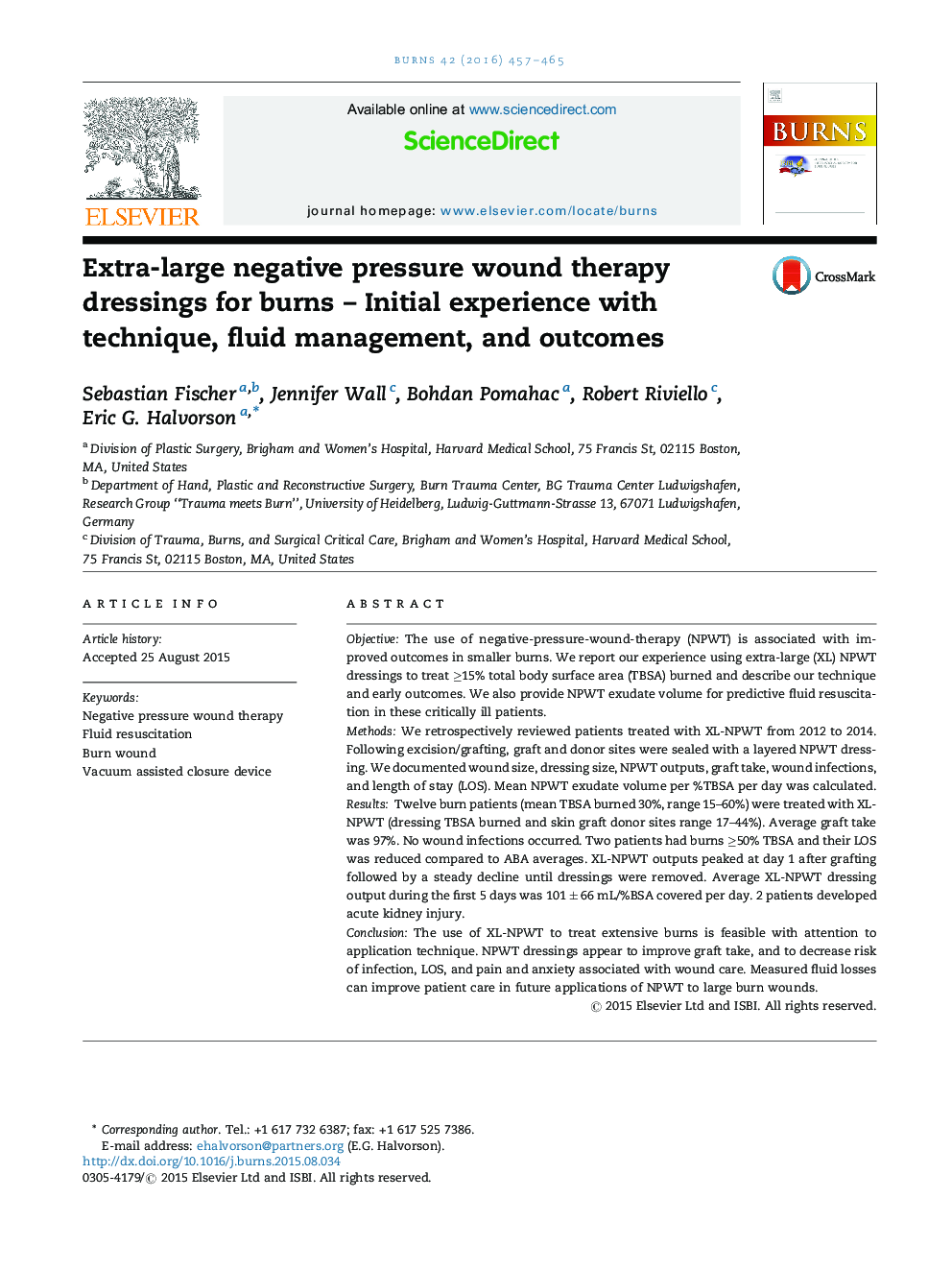| کد مقاله | کد نشریه | سال انتشار | مقاله انگلیسی | نسخه تمام متن |
|---|---|---|---|---|
| 3104056 | 1191639 | 2016 | 9 صفحه PDF | دانلود رایگان |
• We investigate feasibility and safety of negative pressure wound therapy for large scaled burns (>15% TBSA).
• Technique and modifications are presented in detail.
• Patient outcomes are encouraging for further application.
• Fluid loss in patients with burns >15% TBSA was 101 ml/%BSA/d during the first 5 days after grafting.
ObjectiveThe use of negative-pressure-wound-therapy (NPWT) is associated with improved outcomes in smaller burns. We report our experience using extra-large (XL) NPWT dressings to treat ≥15% total body surface area (TBSA) burned and describe our technique and early outcomes. We also provide NPWT exudate volume for predictive fluid resuscitation in these critically ill patients.MethodsWe retrospectively reviewed patients treated with XL-NPWT from 2012 to 2014. Following excision/grafting, graft and donor sites were sealed with a layered NPWT dressing. We documented wound size, dressing size, NPWT outputs, graft take, wound infections, and length of stay (LOS). Mean NPWT exudate volume per %TBSA per day was calculated.ResultsTwelve burn patients (mean TBSA burned 30%, range 15–60%) were treated with XL-NPWT (dressing TBSA burned and skin graft donor sites range 17–44%). Average graft take was 97%. No wound infections occurred. Two patients had burns ≥50% TBSA and their LOS was reduced compared to ABA averages. XL-NPWT outputs peaked at day 1 after grafting followed by a steady decline until dressings were removed. Average XL-NPWT dressing output during the first 5 days was 101 ± 66 mL/%BSA covered per day. 2 patients developed acute kidney injury.ConclusionThe use of XL-NPWT to treat extensive burns is feasible with attention to application technique. NPWT dressings appear to improve graft take, and to decrease risk of infection, LOS, and pain and anxiety associated with wound care. Measured fluid losses can improve patient care in future applications of NPWT to large burn wounds.
Journal: Burns - Volume 42, Issue 2, March 2016, Pages 457–465
